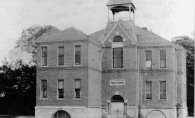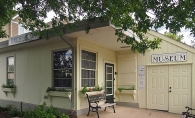In its current state, the cracked and weathered stone walls are nearly obscured behind wild growth. The remains of a once sturdy house are surrounded by a fence to keep visitors safe. The roof has fallen in and sags into the interior. It’s been nearly 140 years in coming, but the Schmid Farmstead Ruins site in Minnetrista’s Lake Minnetonka Regional Park is about to have its moment in the sun, now that it has bee listed on the National Register of Historic Places, a designation it officially received last month.
Since the Three Rivers Park District acquired the site in the 1990s, they’ve looked for ways to highlight and restore it. With a designation on the historic register, visitors will be able to learn about the history of this property as never before.
Bill Walker is the cultural resources manager for the Three Rivers Park District, and one of the driving forces behind seeking national register certification for the site. “It’s a tangible connection to a part of history that’s mostly gone,” Walker says.
Built in 1876, the farmhouse is unusual—built of fieldstone rather than the Chaska brick that is typical of the region, with a style of German folk architecture that has made historians suspect that there was some true architectural expertise in the Schmid family.
The Schmid brothers, Joseph and Benedict, “came over in this massive wave of German immigration in 1848—some of them were political refugees, some of them were just riding the wave, because of the opportunity,” Walker explains.
In 1856, younger brother Benedict bought the farmstead property, and the land was deeded to older brother Joseph in 1862. The Schmids probably lived in a log cabin for a few years before the farmhouse was constructed. “That’s generally what you did,” Walker says. “You buy this property in the big woods, there’s lots of trees and you build a log cabin until you can make some money. Until, by the 1870s, all of a sudden you start to see these more permanent houses.”
The Schmids occupied the farmstead until 1900. The property was bought in 1905 as a hobby farm by Albert Loring, son of Charles Loring, the founder of the Minneapolis parks system.
“Back then, if you were wealthy, you had your home in the city,” Walker says. “It was common to buy a nice estate out in the country and spend time on some sort of land or some kind of hobby farm.” Loring installed a dairy, which lies just down the hill from the historic farmhouse. In fact, the site is chock-full of artifacts, and the remains of other farm outbuildings.
“The ruins are a good example of what everybody was doing,” Walker says. “The fieldstone house is exceptional, but the Schmids’ story is a regular representation of how life would have been back then.”
The pursuit of a National Register of Historic Places nomination benefitted hugely from several studies by archeologists and other experts, who survey historical sites across the state and provide analysis. The Schmid farmstead was among the sites analyzed, and its unique state—less than a building but more than a foundation—gives it a distinction that the team feels is worthy of national register certification.
“Right now, the ruins are closed to the public,” says Walker, “to keep people and resources safe.” If you do visit the park this season to view the ruins, they should be easy to spot with fewer leaves on the trees. Walker reminds visitors to stay safe on the proper side of the fence.
Over the next few years, the park hopes to install reinforced walls and a more modern roof to protect the structure from the elements, as well as a slotted boardwalk that would make it safe for visitors to walk over the farmhouse cellar and look inside.
Walker envisions the ruins as one unique piece in the puzzle of Lake Minnetonka historical sites that creates a vivid picture of the area’s diverse past.
“All these little vignettes combine into a really rich picture of history,” he says.
To learn more about the National Register of Historic Places, visit the website here.









